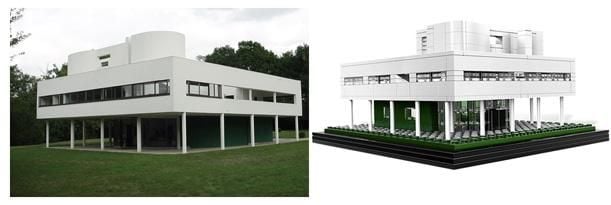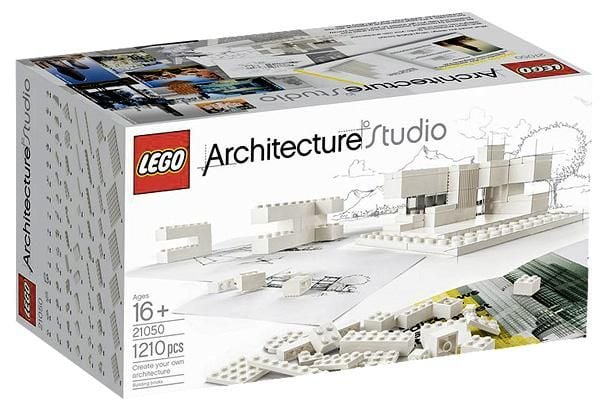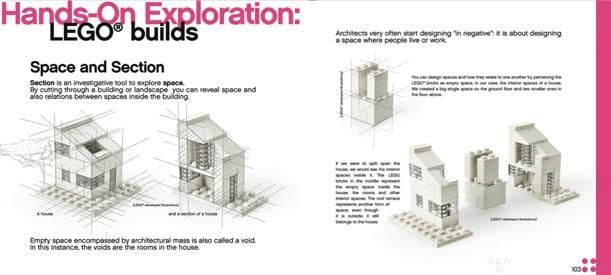Lego Architecture Studio Brings Modernism to the Play Room
The childhood toy becomes an architect’s dream come true
/https://tf-cmsv2-smithsonianmag-media.s3.amazonaws.com/filer/20130814012034lego-470.jpg)
Lego bricks have been inspiring generations of future architects since they first hit toy store shelves in 1949. For any kid (anyone really) with even the slightest predisposition toward building, Legos represent an incredible opportunity to create anything. I’ve probably wasted days of my life sitting on the floor amidst piles of tiny plastic bricks, scouring through the thick piles of our carpeting to find the one small piece that would make my design perfect, which inevitably would elude me until one of my parents had the ill fortune to step on it. The possible permutations of the snap-together blocks were limited only by my imagination and the number of blocks on my carpet.
Decades later, my architectural career may be in remission, but I still love Legos. In 2008, the Danish toymaker decided to capitalize on such life-long goodwill, targeting a new product at architects, recovering architects, and those interested in architecture. The Lego Architecture Series gives the brick-obsessed the chance to build their own small-scale replicas of iconic works of architecture from around the world – from the Empire State Building to the Imperial Hotel. Recently, Lego took their interest in architecture even further with the debut of The Lego Architecture Studio, a new set for a more mature demographic that gives users the tools to make their own unique contribution to the Architecture Series.
The first architecture sets were inspired by the work of Adam Reed Tucker, who started practicing architecture –sans Legos– in 1996. After the events of 9/11, Tucker started building Lego models of iconic skyscrapers as a means to help educate the public on the design and engineering of skyscrapers. Why Lego? “I thought… the brick as a medium could be kind of whimsical to offset the intimidating nature of architecture,” Tucker told Smithsonian in 2010. As he started to exhibit his works, the massive, detailed designs soon caught the attention of Lego, who brought Tucker aboard to develop what became the Architecture Series.

Unlike his previous projects, Tucker’s collaboration with Lego resulted in small –really small– models cleverly constructed from some of the smallest and simplest pieces Lego makes. The sets aren’t exact Lego-built replicas, but artistic interpretations created through the medium of plastic brick. Every design is instantly recognizable – a testament to the artists and designers tasked with translating stone and brick to plastic brick. Despite their diminutive size, the surprisingly expensive sets manage to capture the distilled essence of the each structure. The Rockefeller Center model, for example, is just a small, abstract mass of 19 shapes. Yet it’s still Rockefeller Center. The smooth, thin tiles used in the Lego version somehow evoke the art deco urban space with minimalist aplomb. But the Architecture Series is most successful at capturing modernist designs, such as Le Corbusier’s Villa Savoye (1929, above image) and Mies van der Rohe’s Farnsworth House (1951, below image). Along with the assembly instructions, the extensive books that accompany each set provide a little background on the miniature masterpieces, elucidating their historic importance and notable features.

This isn’t the first time that Lego have tried to attract a more professional, design-savvy user. The Architectural Series traces its origins back to 1962, when Lego’s popularity was rapidly increasingly and, in an effort to expand the line, designers created a new type of brick –thin “plates”– that made it easier to construct detailed models. The plates were a success and can still be found in most Lego sets today, but the “Scale Model” line was phased out a few years later. Looking back at their old kit-of-parts, Lego says, “it seemed to match the spirit of the age; where modernist architects were redefining how houses looked, and people were taking an active interest in the design of their dream home.” Perhaps that optimistic times are returning. The new Lego Architecture Studio is a sort of modernist update to the Scale Model series that Lego hope will educate and entertain amateur builders –and perhaps even professionals– of all ages.

Before they went into full production, the monochromatic Architecture Studio was tested and endorsed by noted architecture firms from around the world: REX architecture, Sou Fujimoto Architects, SOM, MAD Architects, Tham & Videgård Arkitekter, and Safdie Architects. The set consists of 1,210 pieces and accompanying user guide – an architectural crash course with contributions from the participating firms — designed to help the Sunday morning modernist learn more about concepts like space, section, scale, mass, symmetry, modules and repetition. Color, history and ornament are basic architectural principles as well, but like the Modernists who inspired the series, the Architecture Studio abandons those ideas in favor of studies in pure form and planning principles.

While the fundamentals are there, a lot of the fun seems to be missing. The affordable, egalitarian multicolored blocks beloved by kids and adults have been replaced with expensive, refined model-making kits that are targeted more toward collectors than kids, and that when built likely won’t be destroyed and reused as part of some other far-out creation, but will sit on a book shelf and collect dust (and I write that as someone with a Villa Savoye on his book shelf collecting dust). It’s more text book than toy box. The beautiful set is, to be sure, a must-have for collectors, but it seems to me that the best way for aspiring architects and designers to learn about architecture isn’t to design efficient, austere forms, but suburban homes with with lasers, UFO landing pads, castle turrets and a wind-mill thingy:
/https://tf-cmsv2-smithsonianmag-media.s3.amazonaws.com/accounts/headshot/Jimmy-Stamp-240.jpg)


/https://tf-cmsv2-smithsonianmag-media.s3.amazonaws.com/accounts/headshot/Jimmy-Stamp-240.jpg)